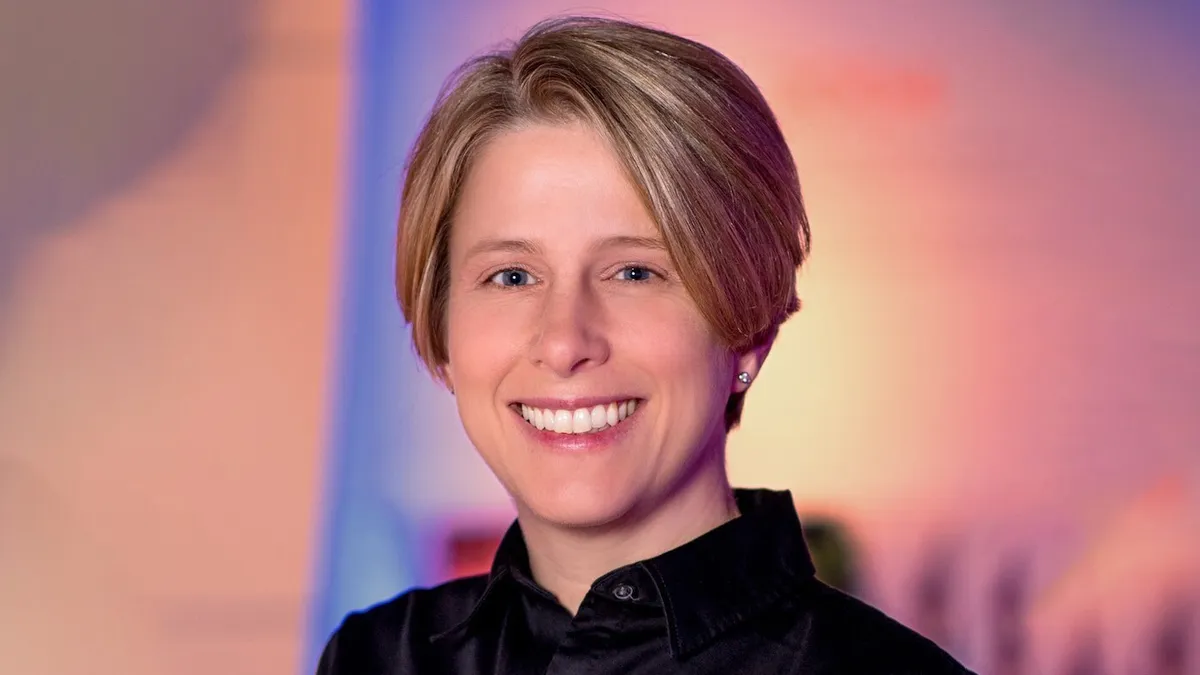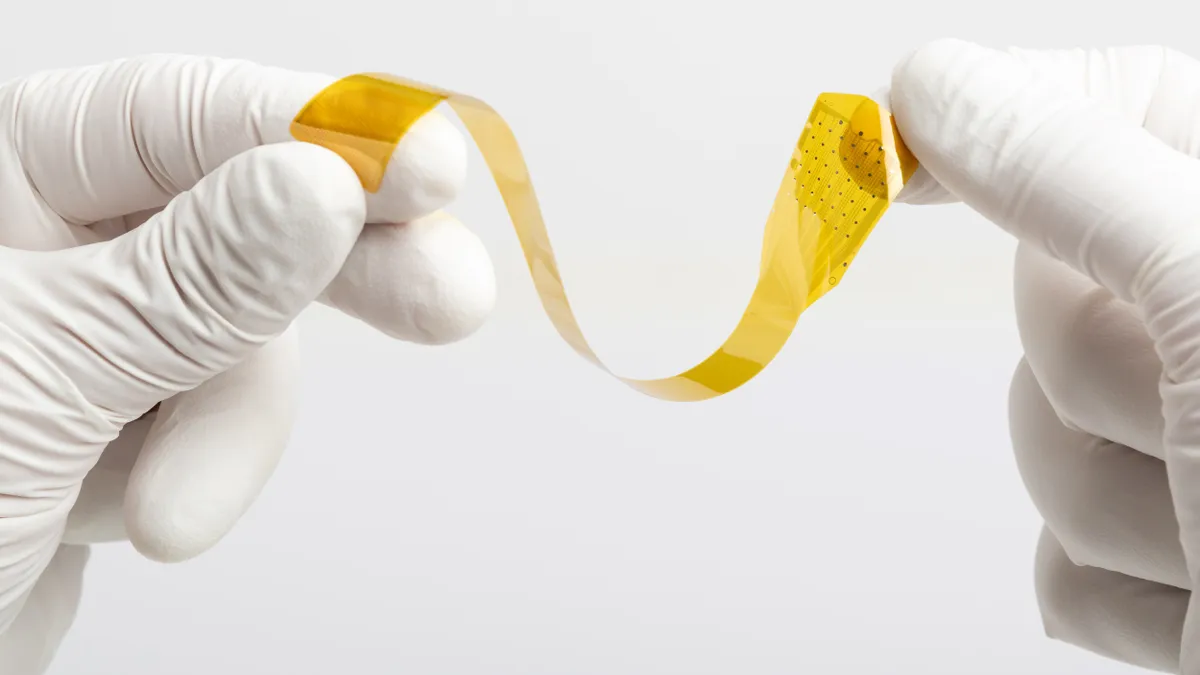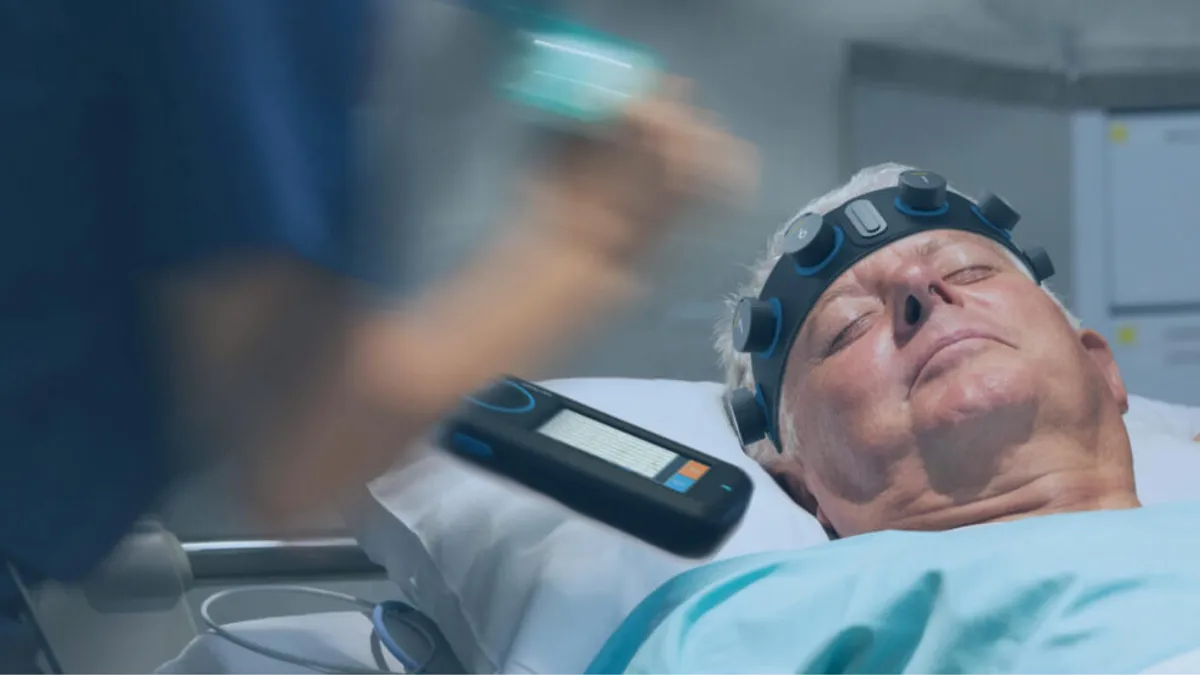Tandem Diabetes Care is setting plans for new devices and expanding to a broader group of patients. The San Diego-based maker of insulin pumps has set a goal of reaching 1 million users by 2027, up from 400,000 users last quarter, by expanding to patients with Type 2 diabetes.
The company last year shared the results of a study of its t:slim X2 insulin pump in patients with Type 2 diabetes, and Tandem recently acquired AMF Medical, a company making a tubeless insulin pump patch, creating a potential rival to Insulet, whose tubeless Omnipod pumps are disposable. Tandem also is preparing to launch its Mobi device, a smaller insulin pump controlled with a mobile app.
Elizabeth Gasser, Tandem’s chief strategy officer, talked about the recent acquisition, plans to expand to more patients with Type 2 diabetes and how the company takes the environmental impact into account when designing devices.
This interview has been edited for length and clarity.
MEDTECH DIVE: Big picture, what trends are you following going into 2023?
GASSER: I think there are really three that are top of mind:
We all live in a smart pump world now. As we look at the landscape around us, we are getting to the point where the narrative is [automated insulin delivery] systems, it's starting to get to that place where everyone can be a little bit smart. So how can you be the most effective smart system out there for patients in terms of the outcomes you're delivering, in terms of the ease of use and usability?
Outside of the software space, you also see a market where there's meaningful diversification in form factor. We moved the needle with X2 [insulin pump] and the use of touchscreen interfaces. Our competition clearly has a solution in the patch domain, and there are a lot of new market entrants coming to the fore seeking to participate at one end of the spectrum or another. For us, we've been very public about the fact that we have a portfolio philosophy when it comes to hardware. We don't think one size fits all. Looking at the increasing diversity out there in the market, it gives me conviction in our strategy, but then also it's something that I continue to monitor.
Pharmaceutical companies are making strides in extending the time over which long-acting insulin takes effect, which has interesting implications for how you think about strategies to go past where we are today with insulin delivery for the broader Type 2 segment. We have an investment in CeQur, which is a bolus-only device, which complements trends like the transition to long-acting insulin and is a very different set of choices than looking at a basal-only pump.
Tandem closed its acquisition of AMF Medical this month. What was the strategy behind that?
We started at the beginning of 2022, really thinking long and hard about how we fulfill the promise of serving the segment of the market that very much wants patch-first [devices]. We had internal R&D efforts. As we went through the year, we continued to reflect on whether we wanted to be in the business of delivering disposable devices or we wanted to stay true to our principles, our durable devices, which candidly are a little more environmentally friendly, when you're not having to throw away a battery and chips every three months.
So we started to canvas the other opportunities out there and think about whether there were inorganic opportunities for us to pursue the same end. We had a relationship with AMF Medical, we continued to explore it through 2022, and we grew increasingly excited about the fact that it was a highly ergonomic, small form-factor device, very much designed with environmental principles in mind, designed for these prefilled cartridges, so really starting to point at ease of use. And [we] got to the point where we were like, this is the solution we want to pursue.
The team is very experienced, [with a] long-standing history in designing miniaturized devices for high scale manufacturing. We were excited to be able to add the device to our portfolio, and this is the representation of how we intend to pursue patch and tubeless.
There's a tendency to conflate tubeless and disposable because the only tubeless option out there is disposable. And it's not the same thing.
What about AMF’s product helped alleviate those environmental concerns?
If you look at the design of the product, there are three pieces to it. You have the on-body site, which is the tubeless infusion site. You have a cap that is the docking point between the site and the pump, and then you have the pump itself.
There will always be some level of consumable attached to the delivery of infused medicine. The pump itself is a multiyear durable [device]. And so the real focus for us there is how do you minimize electronic waste?
There’s been a lot of discussion recently in diabetes technology about expanding to more patients with Type 2 diabetes, not just Type 1. How are you thinking about this?
I think as an industry we throw around the word Type 2 without really reflecting on the underlying segmentation of the population. So when we're talking about Type 2, there's the headline number, the growing incidence of Type 2 at the macro, national level where we end up talking about 30 million users. For the world we operate in, there are two categories within that group. There are the individuals who are on basal [insulin] only and then there are the individuals who are on multiple daily injections, who use rapid-acting insulin. And so for us, when we're talking about Type 2, we're really focused on Type 2s using rapid acting insulin on multiple daily injections. For that segment, there's more than 2 million people in the U.S. today, and pump penetration among that group is less than 5%.
There's clearly an opportunity for us to continue to adapt our product to the needs of the Type 2 user. I think there's a combination of things. There's the technology itself, can we make it very highly usable, easy to adopt? Can we demonstrate the efficacy in this population in a way that encourages physicians to look at pumps as a credible option for therapy?
You'll see us talking more and more about the results that we are having with Type 2 patients when prescribed off-label. [It’s] very effective in delivering improved outcomes. And that will lead us to a more formal indication for Type 2.
We and others in the industry continue to engage with Medicare to remove requirements like C-peptide tests for Type 2, which is currently the proof for getting a pump. It's not necessarily a clinically relevant bar in all cases. So there's work going on to remove some of those hurdles to access.
From a device perspective, we believe this group of users highly value discretion. [People] often come to being a Type 2 later in life after years of diet, medication, and being told they're not trying hard enough. And so some of our thinking on the Mobi product that we're bringing to market this year, is with a smaller form factor, with a mobile control interface, you can deliver on some of that discretion because you don't have to pull it out to interact with it.
What policies are you watching going forward?
Medicare coverage for pumps for Type 2 is something we are interested in and advocate for.
Also, just looking more broadly at the cost of insulin and state level initiatives, I think it's relevant to our space. It certainly informs the insulin support roadmap for a company like [ours], especially with pathways towards biosimilars and alternate initiatives like the California state initiative around producing insulin.
It's all in the vein of what does the world look like for our patients and our customers moving forward.



















